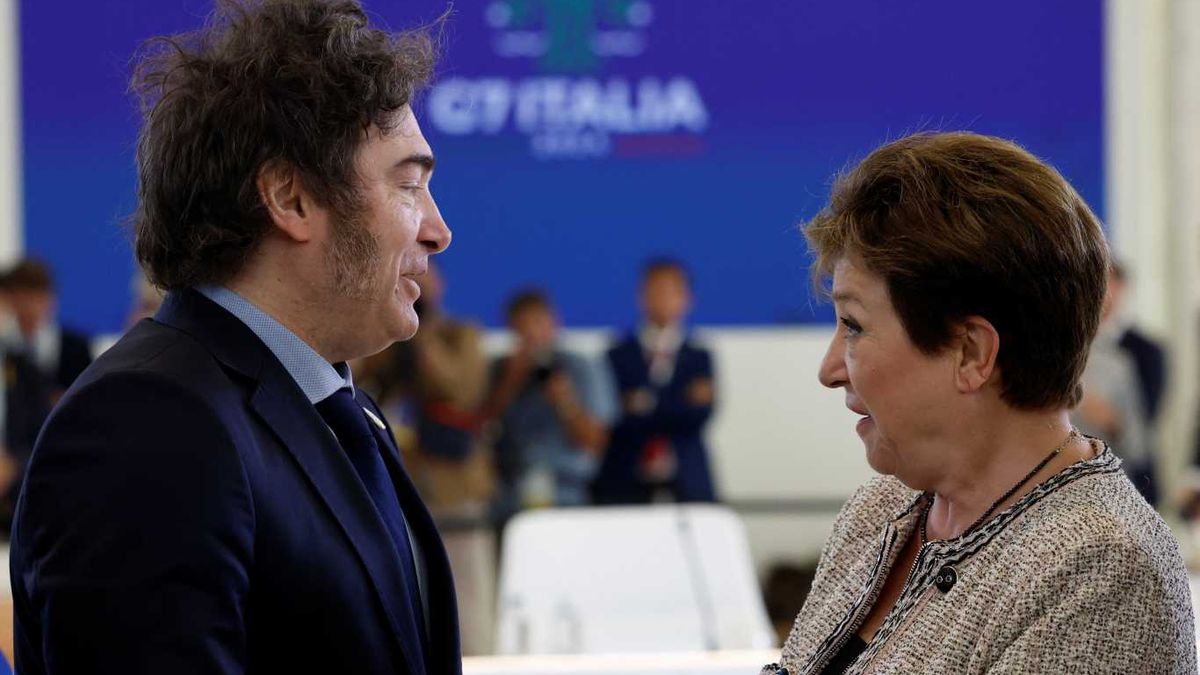“The global economy faces major policy changes and persistent shocks amid unusually high uncertainty. In this context, growth in Latin America and the Caribbean is expected to be affected by different exposures to global trade and dependence on remittances, raw materials and global capital markets.” This is stated in the World Economic Outlook report. International Monetary Fund (IMF) referring to the Western Hemisphere announced this Friday in Washington.
The document weighs structural reforms who is holding the presidency of Javier Milei and anticipates a Argentine GDP growth of 4.5% for the current year with inflation of 28%. He also warns that “Sustained efforts are needed to maintain the fiscal anchor, strengthen the monetary and liquidity management framework, and boost reserves to facilitate lasting access to international capital markets.”
The Fund highlights that “since December 2023, the Milei administration has implemented an ambitious package of market-oriented measures, reforms to boost productivity and growth”. It notes that these reforms have focused on removing entrenched barriers to trade, lifting strict financial, product and labor market regulations, and enacting governance changes.
It argues that Argentina has faced significant structural impediments to growth that worsened during the 2010-22 period as a result of strict restrictions and high prices, interest rates and currencies, monetary controls and labor market regulations that discouraged formal employment and increased the cost of doing business together with a deterioration in regulatory quality, government effectiveness and overall governance and transparency.
Among the Government’s measures, it identifies those referring to the commercial release. He points out that the Milei management has reduced numerous (and highly discretionary) tariffs and non-tariff trade barriers, eased most exchange restrictions (although some were recently reintroduced), customs procedures were simplified through digitalization and regulations better aligned with international standards.
Also rescues a new investment regime (RIGI) has guaranteed commitments for more than US$15 billion in foreign direct investment, mainly in energy and mining.
Another of the chapters referred to is financial deregulation. To encourage credit and investment, as well as improve the transmission of monetary policy, interest rate controls on loans and deposits were removed and new financial instruments were introduced. The securities regulator shifted its focus toward market-friendly post-issuance supervision, making capital markets more accessible.
Regarding product market deregulation, to eliminate market distortions, reduce administrative burdens and improve competition, More than 1,000 regulations in key sectors were repealed or modified such as oil, gas, mining, electricity, transportation, retail and real estate.
As first step towards improving labor market flexibilityregulations were updated to allow sectoral collective bargaining, simplify the tax system for self-employed workers, and extend trial periods for new hires.
To rationalize the State, increase efficiency, reduce intervention and improve transparency, numerous regulations were issued that allowed the rationalization of public entities, the closure of trust funds and the conversion of state-owned companies into joint stock companies before privatization. Administrative processes were also modernized and a public service reform was launched.
Following the expiration of delegated executive powers in July 2025, the Fund document recalls that the administration has launched the Initiative of “zero bureaucracy” to reduce paperwork and gather public input to reduce regulatory burdens.
The agency considers vital additional efforts to reform labor markets and fiscal policy to address informality and increase productivity. The IMF believes that, if these reforms are maintained and deepened, Significant medium-term gains could be generated by opening up the Argentine economy, improving the quality and predictability of the regulatory and tax regime, and streamlining administrative procedures..
Likewise, it understands that these policies will have to be complemented by efforts to address governance weaknesses.
In relation to the current program between the Argentine Government and the organization, it maintains that the Expanded Service of the Fund has supported the transition to a more flexible exchange rate regime and the relaxation of most exchange restrictions.
The Fund evaluates that “annual core inflation continues to fall graduallywhile “activity has softened more recently, also reflecting election-related shocks and uncertainties.”.
He also warns that “Sustained efforts are needed to maintain the fiscal anchor, strengthen the monetary and liquidity management framework, and boost reserves to facilitate lasting access to international capital markets.”
The Fund now projects that GDP growth will moderate from around 4.5% this year to 4% in 2026, while Annual inflation will fall from around 28% at the end of 2025 to around 7-12% at the end of 2026.
Deceleration
For Latin America and the Caribbean, the Fund hopes that activity slows down amid the spillover effects of global policy changes and persistent uncertainty. It also observes that the disinflation process continues, but considers the convergence towards the objectives will probably take longer than expected previously in some countries.
It notes that economic growth during the first half of the year remained relatively stable in the region. The contribution of exports to growth increased, as external sales volumes grew in line with global trends. This reflects strong copper and manufactured exports (Chile, Mexico) and higher exports associated with strong agricultural production in several countries (Argentina, Brazil, Colombia, Uruguay).
In contrast, the contribution of private consumption to growth declined in some large economies (Brazil, Mexico), although it still showed strength in other countries (Argentina, Colombia, Paraguay, Uruguay), as labor markets and consumer credit growth remained relatively strong.
The IMF projects that growth in Latin America and the Caribbean will be 2.4% in the current year and will moderate to 2.3% in 2026. He also hopes that Inflation in the region (excluding Argentina and Venezuela) will remain practically stable at 4.3% in 2025, resuming its downward trend until reaching 3.5% in 2026.
Source: Ambito




